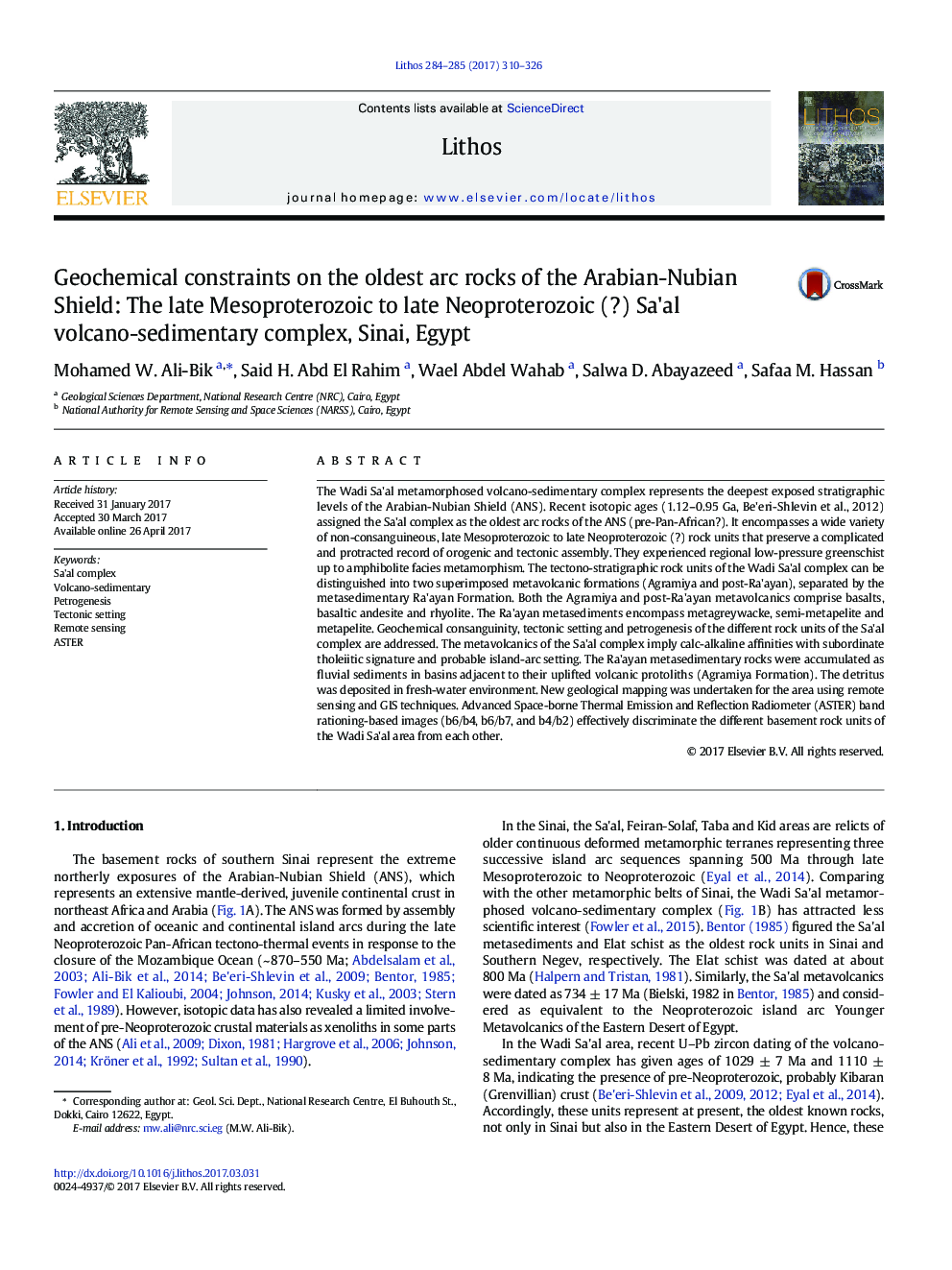| کد مقاله | کد نشریه | سال انتشار | مقاله انگلیسی | نسخه تمام متن |
|---|---|---|---|---|
| 5784044 | 1638630 | 2017 | 17 صفحه PDF | دانلود رایگان |
عنوان انگلیسی مقاله ISI
Geochemical constraints on the oldest arc rocks of the Arabian-Nubian Shield: The late Mesoproterozoic to late Neoproterozoic (?) Sa'al volcano-sedimentary complex, Sinai, Egypt
دانلود مقاله + سفارش ترجمه
دانلود مقاله ISI انگلیسی
رایگان برای ایرانیان
کلمات کلیدی
موضوعات مرتبط
مهندسی و علوم پایه
علوم زمین و سیارات
ژئوشیمی و پترولوژی
پیش نمایش صفحه اول مقاله

چکیده انگلیسی
The Wadi Sa'al metamorphosed volcano-sedimentary complex represents the deepest exposed stratigraphic levels of the Arabian-Nubian Shield (ANS). Recent isotopic ages (1.12-0.95Â Ga, Be'eri-Shlevin et al., 2012) assigned the Sa'al complex as the oldest arc rocks of the ANS (pre-Pan-African?). It encompasses a wide variety of non-consanguineous, late Mesoproterozoic to late Neoproterozoic (?) rock units that preserve a complicated and protracted record of orogenic and tectonic assembly. They experienced regional low-pressure greenschist up to amphibolite facies metamorphism. The tectono-stratigraphic rock units of the Wadi Sa'al complex can be distinguished into two superimposed metavolcanic formations (Agramiya and post-Ra'ayan), separated by the metasedimentary Ra'ayan Formation. Both the Agramiya and post-Ra'ayan metavolcanics comprise basalts, basaltic andesite and rhyolite. The Ra'ayan metasediments encompass metagreywacke, semi-metapelite and metapelite. Geochemical consanguinity, tectonic setting and petrogenesis of the different rock units of the Sa'al complex are addressed. The metavolcanics of the Sa'al complex imply calc-alkaline affinities with subordinate tholeiitic signature and probable island-arc setting. The Ra'ayan metasedimentary rocks were accumulated as fluvial sediments in basins adjacent to their uplifted volcanic protoliths (Agramiya Formation). The detritus was deposited in fresh-water environment. New geological mapping was undertaken for the area using remote sensing and GIS techniques. Advanced Space-borne Thermal Emission and Reflection Radiometer (ASTER) band rationing-based images (b6/b4, b6/b7, and b4/b2) effectively discriminate the different basement rock units of the Wadi Sa'al area from each other.
ناشر
Database: Elsevier - ScienceDirect (ساینس دایرکت)
Journal: Lithos - Volumes 284â285, July 2017, Pages 310-326
Journal: Lithos - Volumes 284â285, July 2017, Pages 310-326
نویسندگان
Mohamed W. Ali-Bik, Said H. Abd El Rahim, Wael Abdel Wahab, Salwa D. Abayazeed, Safaa M. Hassan,